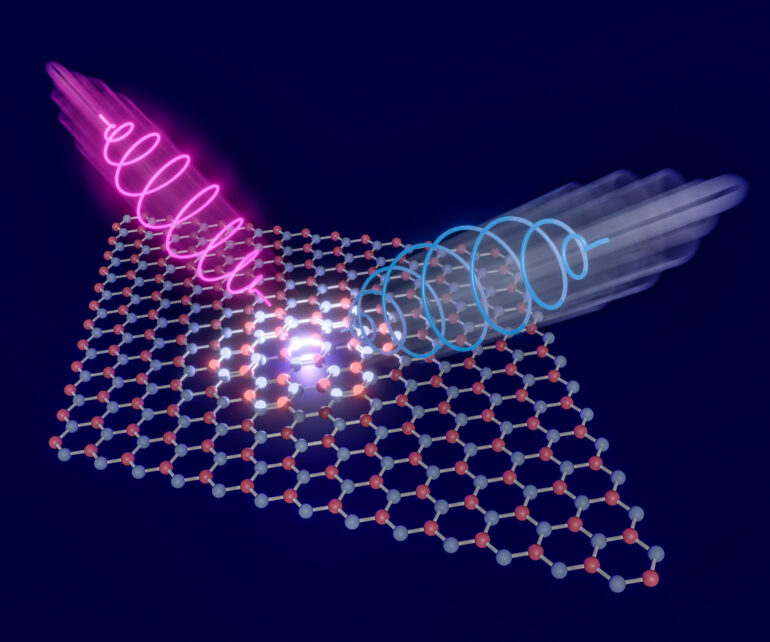Topological phases are not restricted to electronic systems. They can also occur in magnetic materials whose properties are described in terms of magnetic waves—or so-called magnons. However, even though scientists have established techniques to generate and read out magnon currents, they have so far been unable to directly ascertain a magnon topological phase.
Just like a sound wave travels through the air, a magnon can travel through a magnetic material by creating a disturbance in its magnetic order. That order can be imagined as a collection of spinning tops sharing a particular rotation axis. The effect of the wave is to slightly tip the axes around which the tops are spinning.
A topological magnon phase is associated with channels that can carry a current of magnons along the edges of the sample. Researchers are hopeful that such edge channels can be utilized to carry information in future spintronics devices, analogous to how electric currents are used to transmit signals in electronic devices. However, before such technologies can be realized, scientists need to find a way to validate if a magnetic phase is topological or not.
The transatlantic research team studied a class of magnetic materials structurally similar to graphene and exposed them to laser light with either a right- or a left-handed polarization, where the laser’s electric field turns either clockwise or anticlockwise around the laser beam’s axis.
The researchers analyzed the light scattered off the material and showed that, if the scattered intensity is different for the two polarizations, the material is in a topological phase. Conversely, if there is no difference in the scattered light intensity, then the material is not in a topological phase. The properties of the scattered light thereby act as clear indicators of the topological phases in these magnetic materials.
The technique is easy to deploy and can be extended to other quasiparticles as well, says lead author Emil Viñas Boström: “Raman scattering is a standard experimental technique available in many labs, which is one of the strengths of this proposal. In addition, our results are quite general and apply equally well to other types of systems consisting of phonons, excitons or photons.”
In the long term, it is hoped that magnons can be used to construct more sustainable technological devices with a much lower energy consumption: “Utilizing topological magnon currents could potentially reduce the energy consumption of future devices by a factor of about a 1,000 compared to electronic devices—although there are plenty of issues to be resolved until we get to that point,” says Viñas Boström.
The study is published in the journal Physical Review Letters.
More information:
Emil Viñas Boström et al, Direct Optical Probe of Magnon Topology in Two-Dimensional Quantum Magnets, Physical Review Letters (2023). DOI: 10.1103/PhysRevLett.130.026701
Provided by
Max Planck Institute for the Structure and Dynamics of Matter
Citation:
New optical method to verify topological phases in magnetic materials (2023, January 17)
